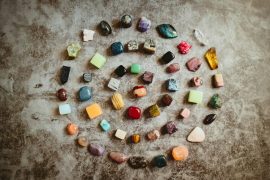White jewelry is a popular choice for its elegance and charm. Among the different white metals used in jewelry, platinum and white gold are the most sought-after. While platinum is known for its lustrous white finish, white gold is equally captivating and has its own unique charm.
In this article, the focus will be on white gold jewelry. It will explore the manufacturing process of white gold, the composition of 14k and 18k white gold, and why it is mixed with alloy metals. Additionally, the article will cover why white gold starts to look yellow or pinkish, and why it is coated in rhodium. Finally, the article will weigh the pros and cons of white gold to help readers make an informed decision when choosing white metal jewelry.
Key Takeaways
- White gold is a popular choice for jewelry due to its elegance and charm.
- The manufacturing process of white gold involves mixing pure gold with alloy metals.
- White gold is coated in rhodium to enhance its shine and durability.
What is White Gold? Is White Gold Natural?
White gold is a type of gold alloy that is made by mixing pure gold with white metal alloys such as silver, nickel, and palladium. The resulting gold alloy is then rhodium plated, which gives it a lustrous and shiny white surface. Although white gold is not made entirely of gold, it is still considered a real type of gold.
The process of creating white gold involves the alloying of gold with other metals to create a whitish gold and to harden and strengthen the gold. This is because pure gold in its natural form is too soft, malleable, and yellow. The addition of white metal alloys to the gold makes it more durable and reliable.
White gold is not a natural form of gold. It is made by man in factories through the process of alloying and plating. However, it is a popular choice for jewelry making due to its stunning appearance and durability. White gold jewelry can be worn daily, but it must be re-plated in rhodium every few years to maintain its white surface.
In summary, white gold is a type of gold alloy that is made by mixing pure gold with white metal alloys and rhodium plating. Although it is not a natural form of gold, it is a popular choice for jewelry making due to its durability and stunning appearance.
White Gold Manufacturing Process
To create white gold, the pure gold must be mixed with other metal alloys, such as nickel, palladium, silver, or manganese. Nickel is the most commonly used metal alloy in white gold due to its affordability, but it has fallen out of favor with many manufacturers because of allergic reactions. Palladium is now the preferred alternative, as it is free of nickel and 100% hypoallergenic.
After the mixing process, the initial color of the jewelry is often more silver than white, leaving it with a partially processed intermediate product that must be processed further for the desired vibrant silver whitish hue that is sought after in white gold. The most popular method for achieving this desired finish is by coating or plating the white gold with a thin layer of rhodium, a white metal belonging to the platinum family, due to its bright white color and impressive durability.
Rhodium plating is a temporary solution, and over time, it will wear off, exposing the inner layer with the yellow tint from the white gold alloy. The yellow tinge may be slightly or extremely noticeable once the rhodium plating starts to wear off, depending on the exact makeup of the white gold.
It is important to note that some jewelry makers may use regular yellow gold as the base and plate it with rhodium, resulting in fake white gold that wears out too quickly and not in the most beautiful way. However, this can be remedied by taking the jewelry to a jeweler for replating, which is an inexpensive process.
In jewelry-making, the highest karat white gold is 18k, while the lowest purity of gold is 9k. For 18k white gold, there is 75% pure gold, while 14k white gold will have 58.5% gold. To make white gold (nickel-free), the gold would be alloyed with 25% and 41.5% metal alloys (palladium or nickel), respectively.
Rhodium plating is a crucial step in creating white gold jewelry, as it not only protects the jewelry from tarnishing but also increases its resilience and resistance to scratching. By rhodium plating the jewelry, it also provides an elegant and reflective white finish, making it the most recommended way of creating white gold. The process involves cleaning the jewelry thoroughly and using electrocleaning to remove dirt and visible scratches before applying the rhodium coat to the gold alloy base.
Some Basic Facts of White Gold
White gold is a popular choice for jewelry, but what makes it durable and a good investment option? Let’s take a closer look at some basic characteristics of white gold.
The Durability of White Gold
White gold is durable, but its hardness depends on the karatage or purity of the gold used and the concentration of the metal alloy added. A higher percentage of gold in the alloy results in softer and less durable white gold that is susceptible to scratching. On the other hand, more metal alloy added to the gold results in more durable white gold that lasts longer. Therefore, 14k white gold is more durable than 18k white gold.
However, the durability of white gold is also affected by rhodium plating, which is resistant to scratching and protects the white gold base. The plating will wear off after some months or years, depending on how often the piece is worn and how well it’s cared for.
White Gold and Nickel Allergies
White gold may or may not contain nickel as one of the main metal alloys added to the gold. If nickel is incorporated or used as the metal alloy, individuals with sensitive skin and nickel allergies may experience an allergic reaction. Rhodium plating applied to the white gold reduces the risk of allergies. However, as soon as the plating starts to wear off, individuals may be exposed to nickel, which may manifest as a rash if allergic. To reduce the risk of allergies, individuals can get the jewelry plated as soon as they notice signs of wear. Alternatively, they may choose to buy white gold that is completely free of nickel, which is made of silver, gold, and palladium.
White Gold vs. Yellow Gold
Personal preferences often guide the choice between white gold and yellow gold. White gold is lustrous and beautiful but requires replating every 1-3 years, while yellow gold does not. Gemstone settings also play a role in the choice between white and yellow gold. White gold settings are often more durable than yellow gold settings for the same karat gold. When choosing the color of gemstones and the base metal, individuals should consider the complementary effect of the colorless diamonds against the white gold setting. Setting lower grade diamonds with yellowish hues against white gold may not be the best idea, and yellow gold may be a preferable option.
What is 14k White Gold Made Of?
14k white gold is an alloy consisting of 58.5% pure gold and 41.5% white metal alloys, including copper, zinc, nickel, palladium, or silver. When alloyed with palladium, 14k palladium white gold contains gold, silver, copper, and palladium. The addition of these metals gives white gold its characteristic color and durability.
What is 18k White Gold Made Of?
18k white gold is a highly valuable type of gold in the jewelry realm. It is composed of 75% pure gold and 25% metal alloys, which gives it a high level of purity. The metal alloys in 18k white gold are typically palladium, nickel, or zinc.
Compared to 14k white gold, 18k white gold is less durable due to its higher gold content, making it softer and more malleable. 14k white gold, on the other hand, contains only 58.5% gold and the rest is metal alloys, which harden the white gold and make it more durable.
In summary, 18k white gold is composed of 75% pure gold and 25% metal alloys, while 14k white gold contains only 58.5% gold and the rest is metal alloys. The difference in durability between the two types of gold is due to their gold content and metal alloy composition.
Why White Gold is Mixed with Alloy Metals?
To create a stronger and more durable form of gold that can be used in jewelry, white gold is mixed with alloy metals. The pure form of gold, known as 24 karat gold, is too soft to be used in jewelry. Without alloy metals, gold loses its rigidity and would easily bend out of shape, making it useless in jewelry making. By adding metal alloys, such as nickel, palladium, or silver, to the gold, a more solid and durable metal is created that can withstand the wear and tear of everyday use. This process results in a beautiful and long-lasting piece of jewelry that can be enjoyed for years to come.
Why White Gold May Turn Yellow or Pinkish
Over time, rhodium-plated white gold jewelry may begin to show a pinkish or yellowish hue. This is a natural occurrence as the rhodium plating gradually wears off, revealing the whitish gold underneath. The speed at which this discoloration occurs is influenced by various factors such as the wearer’s skin pH level, the household cleaners and toiletries used, and exposure to pollution. The loss of the rhodium layer is a major contributor to the discoloration of white gold. It is important to note that this discoloration is a normal process and does not indicate a defect in the jewelry.
Why is White Gold Coated in Rhodium?
White gold is an alloy of gold and nickel, among other metal alloys. Nickel is not only the whitest metal, but it is also a rather cheap version of metals that can be alloyed with gold. Unfortunately, about 1 in 8 people are allergic to nickel, and this can cause skin irritation and other health problems. Therefore, a coating is needed to keep the nickel from being in contact with the skin.
Rhodium plating is used to enhance the whiteness of white gold and to prevent allergies, specifically nickel allergies. Rhodium is a safe metal to use on the skin, and it was determined that rhodium plating does the job well, preventing the controversial matter of nickel release, reducing nickel allergies in the process.
Without the rhodium plating, white gold would not be white gold, unless another metal was plated over the gold. The gold/silver/nickel alloy results in the formation of a yellowish gold alloy and is not actually white. Therefore, plating ensures that you have the lustrous white gold.
Pros and Cons of White Gold
White gold is a popular choice for jewelry due to its affordability compared to platinum. It is also suitable for individuals with fair and rosy skin tones. White gold is durable and resistant to scratching, making it ideal for daily wear. Additionally, it complements white diamonds well, giving it a unique and timeless finish.
However, white gold has its drawbacks. It must be replated every 1-3 years depending on use and care. Furthermore, it often contains nickel, which can be a problem for people with sensitive skin or nickel allergies. Despite these cons, nickel-free palladium white gold is safe and ideal for individuals with nickel allergies. Overall, white gold remains a beautiful and popular choice for jewelry.
Conclusion
White gold is a popular metal used in jewelry making. It is a combination of gold and metal alloys, and is often rhodium plated to achieve its characteristic white finish. Tiger, a fashion and jewelry expert, provides valuable information about the metal and its uses. For more information on jewelry metals, readers can visit the website’s home page for the latest posts. Tiger’s expertise in the industry has helped thousands of small businesses grow, and he has also worked with big fashion jewelry brands.




